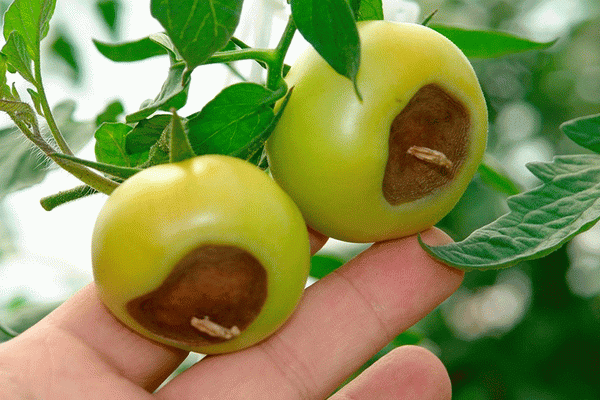It cannot be considered a non-infectious disease or rot affecting a tomato in a greenhouse. First of all, this reduction in harvest by almost a third, which may entail a decrease in income, if tomatoes were grown for commercial purposes. But if one observes with their cultivation simple preventive measures, one can prevent a lot of trouble, one of which is top rot. We will describe the ways to combat and treat this scourge in the article.
Table of contents
Where do vertex rot on tomatoes come from
There are quite a few factors that influence the appearance of the disease:
- high temperature conditions insufficient moisture. Scientists believe that this is the main reason. On dry and hot days, moisture evaporates from the foliage, the roots are not able to replenish the plant in time with the right amount of water. The consequence of this is the outflow of water from the fruit to the leaves, from which a certain number of tomato cells simply die off;
- low levels of calcium in the ground. On such a land, the appearance of top rot is most likely;
- danger and saline ground areas.
Variants of the disease
The disease may be twofold, associated with fungal or agrotechnical origin. Tomatoes can be affected by fungal spores in the ground and transmitted to the healthy shrubs through the air.
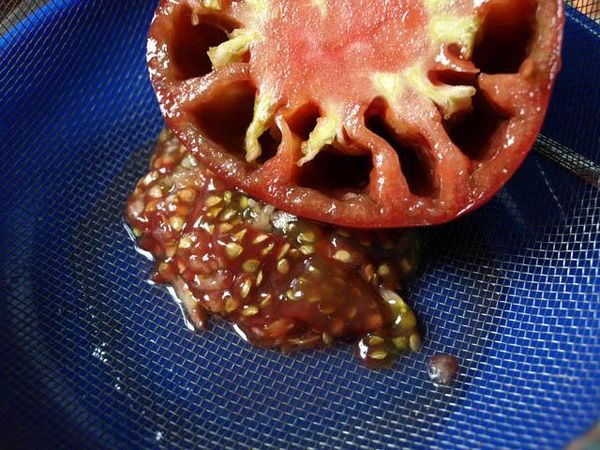
Often bushes become infected seed material, which at one time collected from the affected tomatoes. In this case, the disease is caused by violations in the care of plants.
Non-infectious species
Its cause becomes insufficient calcium, disturbances in irrigation, sudden changes in temperature conditions at night and daytime.
The affected part of the tomato does not soften, the fabric acquires a dark brown shade, sometimes even black. When treating a culture, it is necessary to control the temperature of the air in the greenhouse, air it, properly water the plants, using warm water.
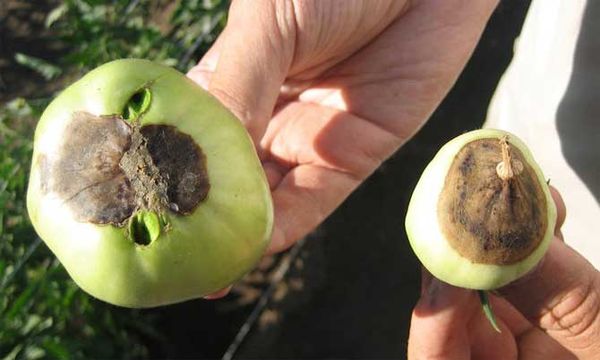
Bacterial variety
Its main cause is bacteria. The disease manifests itself already in the initial phase of growth. With increasing humidity, the affected areas become softer, there is a special smell.
The pathogen can be transported solanaceous crops or insects. Often, the pathogen is already in the seed material, so that it will be necessary to deal with top rot from the moment of sowing. It is only necessary to soak the planting material in a manganese solution in order to disinfect it.
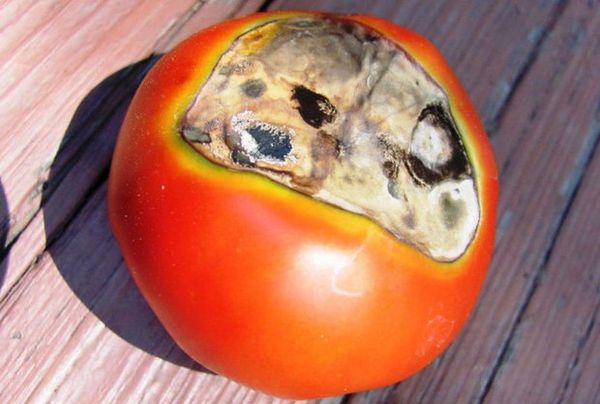
Methods of control and treatment of vertex rot
Ways to protect tomatoes from this disease are fully determined by the reasons for its occurrence - dry soil and lack of calcium.
Required watering in a timely manner, do not bring the soil to drying out and overheating. Top dressings of foliar nature are also used, in which special formulations are used.
If the plants lack calcium, an excellent solution would be to treat the plants with drugs in which, in addition to nitrogen, phosphorus and potassium, there is also boron and calcium. This mixture acts synergistically, the components increase the activity of each other.
Another measure - chemical preparation Brexil Cacontaining up to fifteen percent of calcium and half-percent boron. It is used during foliar dressing, diluting with water at the rate of ten grams per ten-liter bucket. The procedure is recommended to be performed once every fifteen days.
Do not neglect chalking - an excellent measure to help saturate the soil with calcium.It is best to perform this procedure in the autumn when the harvest is fully harvested.
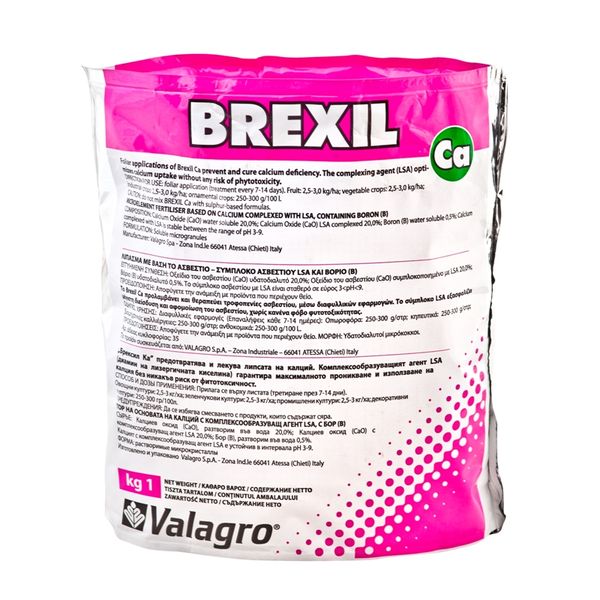
Preventive actions
For this you need:
- choose to grow plants moisture lands. If the soil in the greenhouse is too light, you need to add peat and turf soil to it, which will help retain water;
- it is not necessary on the eve of planting to make a lot of fertilizer compounds, so as not to overfeed the culture;
- it is not necessary to plant bushes too thickly in a greenhouse. Tomato plants need to stepchild and form in a timely manner;
- watering should be carried out regularly, using a sufficient amount of moisture;
- via mulching there will be a good opportunity to retain moisture in the soil, only the layer will have to be changed once a week. For this purpose, suitable grass, nettle, weeds without seeds, compost, dry straw, covering material of white color;
- in hot weather should to air the greenhouseApply the plants with a white cloth.If the greenhouse is made of glass, it can be whitened with lime.
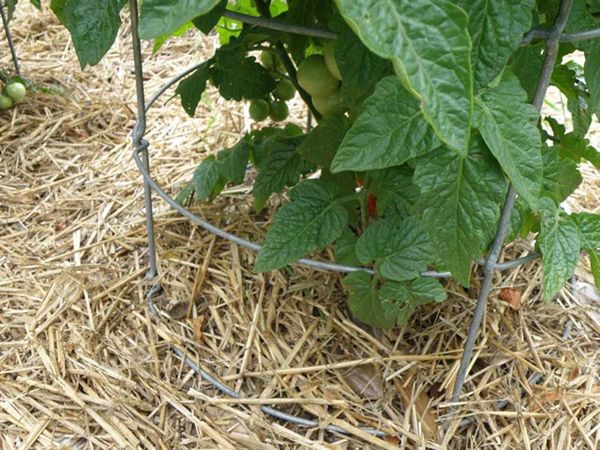
Other sources of infectious disease are water, soil, weeds of solanaceous crops, harmful parasites. So comprehensive measures for any bacterial diseases will be appropriate. This is especially important if in the past years on the landings such diseases have already been noted.
Such activities should include the collection and destruction of plant residues affected by tomatoes, the fight against harmful parasites and weeds, respect for crop rotation and alternation of plants.
If it is not possible to alternate between cultures, it is recommended between the seasons in the garden beds. sow sideratnye plantswhich after cultivation will be embedded in the soil.
Greenhouses, in which there was a vertex rot on the tomatoes, are aired, disinfected, and the soil completely changes.
Using the above recommendations, you can perfectly protect your tomato plants from apical rot, to ensure normal conditions for their growth and development. In this case, you can be sure that the culture will reward you with a good harvest.
